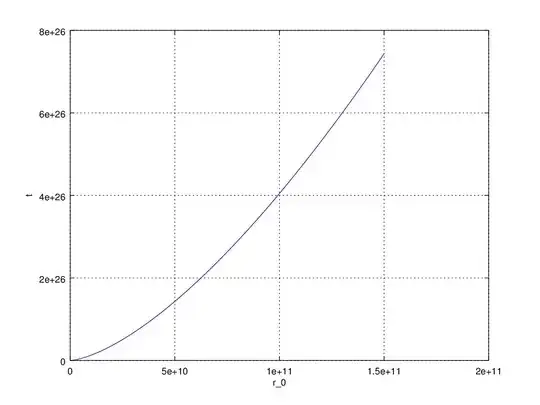Suppose no planet exist in the solar system, only the sun.
Then place a mass at a distance $r$ from the sun.
At what velocity does the mass 'hit' the sun?
Suppose both mass and sun are points in space and movements happen in a line. I know the relativistic consequences of this, just simplify things a bit...
My question rises from calculating the integral $v = a(t)dt$.
I know the acceleration by Newton's law, given by $G\frac{M}{r^2}$, but it depend on the distance and I'm not integrating over distance, but over time.
In the end, $G*M$ are constant, hence I am getting integral of $\frac{1}{r^2} dt$, and I'm stuck.
I'm not looking for answers involving mechanical conservation of energy, simply answers involving this integration method.
Also, how much time does this mass take to hit the sun?
I wrote out the integral of $\int G\frac{M}{r^2}t, dt$, but cannot go further with my actual knowledge.
